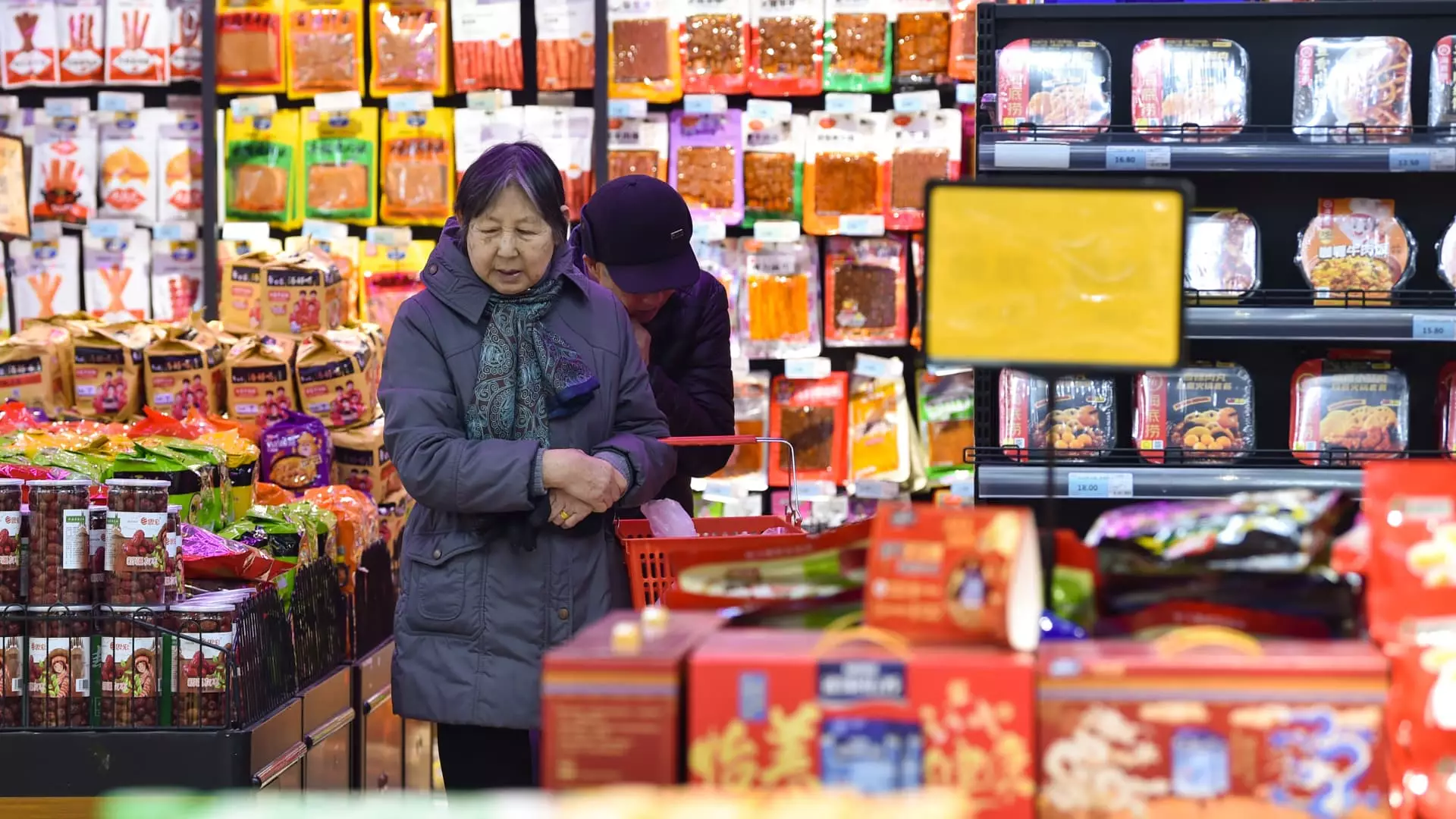In January, China experienced a notable rise in consumer inflation, reaching its highest rate in the past five months. The consumer price index (CPI) marked an increase of 0.5% compared to the same month last year, a substantial acceleration from the modest gain of 0.1% recorded in December. This increase not only surpassed the anticipated 0.4% rise predicted by economists in a Reuters survey but also highlights the complex dynamics of consumer spending behavior in a recovering economy. However, the situation is not purely optimistic, as the patterns of inflation are juxtaposed with persistent producer price deflation, indicating a duality in economic health.
The core inflation figure, which excludes the more volatile food and energy prices, rose to 0.6% from December’s 0.4%. This suggests that while consumer prices are generally on an upward trend, the underlying economic activity, particularly in the manufacturing sector, appears considerably weaker. The lingering deflation in producer prices suggests a troubling overcapacity in industrial production, making it unlikely for these prices to recover in the near term. Senior economists, such as Xu Tianchen from the Economist Intelligence Unit, caution that the path toward neutralizing deflation could take several quarters, reflecting a deeper economic malaise.
It’s crucial to note that seasonal factors, particularly the timing of the Lunar New Year celebrations, played a significant role in shaping January’s inflation figures. This holiday traditionally leads to increased consumer spending as families prepare for gatherings. For instance, air travel saw an 8.9% rise in ticket prices, and the entertainment sector experienced an inflation spike of 11% for movie and performance tickets. Despite these upticks, broader consumer spending data presents a mixed picture, underscoring concerns surrounding job security and wage growth.
During the holiday period, while there was an uptick in visits to movie theaters and an increase in domestic travel expenditures, per capita consumer spending only grew by a modest 1.2% year-over-year. This is starkly lower than the 9.4% growth seen a year prior, indicating a potential erosion of consumer confidence that could hinder a full economic recovery. Furthermore, a slight month-to-month CPI increase of 0.7% was below the forecast and points to a cautious consumer climate.
On the flip side, producers continue to face significant deflationary pressures, with the producer price index (PPI) declining by 2.3% from January of last year. This extended streak of deflation, persisting for a full 28 months, indicates systemic challenges within China’s manufacturing sector. As factory-gate prices continue to fall, it becomes increasingly more challenging for producers to maintain margins, leading to concerns about investment and future production capabilities.
Furthermore, fresh tariffs imposed by the U.S. add another layer of complexity to the landscape. With exports being one of the few bright spots in China’s economy last year, this renewed level of external pressure threatens to hamper trade and growth, potentially leading to calls for increased governmental stimulus.
In light of these economic signals, policymakers are faced with difficult decisions. With average economic growth targets set below 3% for 2025 across various provinces, it is evident that there is a need to stimulate both domestic demand and international trade. Analysts believe that external uncertainties have begun to eclipse domestic economic challenges, leading to a cautious approach in monetary policy. The anticipated economic growth forecast of around 5% for this year is optimistic, yet fraught with risk.
While January’s consumer inflation data might reflect a slight recovery in consumer spending, the persisting producer deflation signals deeper systemic challenges that could undermine economic stability. As China navigates these complexities, the interplay between consumer confidence, external pressures, and policy responses will be critical in determining the future trajectory of its economy. The ongoing quest to balance growth with fiscal prudence will undoubtedly shape China’s economic landscape in the years to come.

